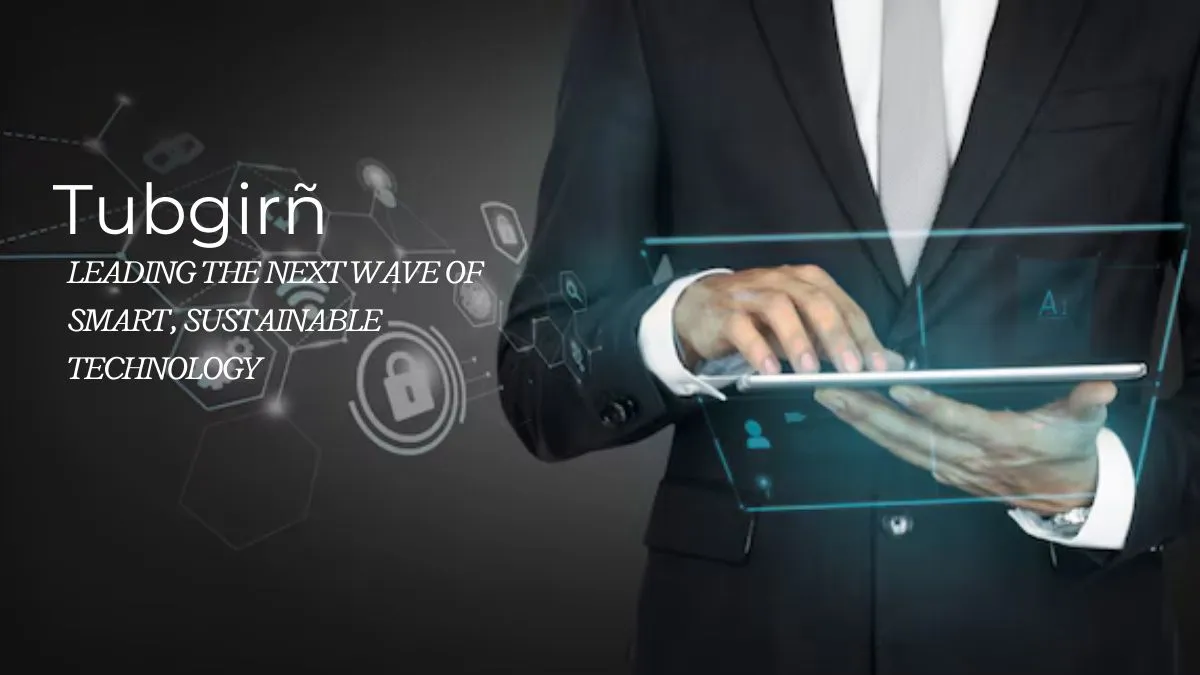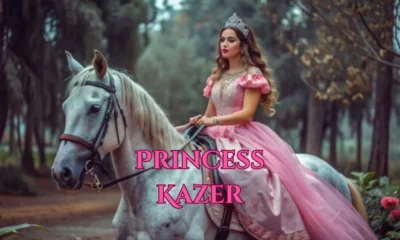GENERAL
Tubgirñ: Leading the Next Wave of Smart, Sustainable Technology

Tubgirñ is one of the pioneering companies with a vision to disrupt industries by adopting AI, automation, and sustainability.It enters an efficient, responsible world, bringing cutting-edge solutions that help businesses succeed. Thus, the integration of smart technology with strategies for environmental awareness ensures this company maximizes productivity while reducing waste and energy consumption. Industries across the globe are rapidly adopting AI-driven automation to stay competitive. Tubgirñ ensures they do so responsibly. Their mission is clear: to bridge the gap between innovation and sustainability, making advanced technology accessible without harming the planet.
The Origin and Evolution of Tubgirñ
Tubgirñ started as a bold idea, built on the belief that technology should serve both business and the environment. The company was founded by a group of visionary engineers and entrepreneurs who were determined to reshape automation with a sustainable touch. The early years were very challenging for Tubgirñ, but persistence led to groundbreaking achievements in pioneering AI-powered manufacturing tools, launching energy-efficient automation systems, and more. The company expanded globally, partnering with industries eager to modernize. Tubgirñ represents innovation today, a leader that has proven innovations can indeed be sustainable.
Tubgirñ’s Core Technologies
At the heart of Tubgirñ’s success are four key technologies: Artificial Intelligence (AI), the Internet of Things (IoT), automation and robotics, and digital twin technology. AI powers smart decision-making, allowing machines to learn and adapt in real time. IoT connects devices, creating seamless communication between systems for better efficiency. Automation and robotics enhance productivity by handling complex tasks with precision and speed. Digital twin technology can extend innovation by virtualizing a copy of physical systems to improve performance before changes are implemented. The main foundation of Tubgirñ’s mission is built in collaboration with these technologies to guide industries toward a smarter and greener future.
AI-Powered Predictive Maintenance
Industries are witnessing transformations in equipment reliability through AI predictive maintenance. Instead of waiting for machines to break down, AI analyzes real-time data and identifies potential issues that could cause those breakdowns before they occur. This approach reduces downtime, prevents costly repairs, and increases the useful life of vital assets. The production lines at manufacturing plants, power outages from energy companies, and transport delays caused by transportation systems will be averted. This results in more than just cost savings; predictive maintenance enhances safety, improves efficiency, and supports sustainability through waste reduction. With Tubgirñ’s AI solutions, businesses gain a competitive edge while allowing operations to remain fluid and uninterrupted.
Sustainable Technologies by Tubgirñ
Tubgirñ ensures sustainability at the heart of its innovations: renewable energy, green technology, and the development of smart systems that enhance efficiency in solar and wind energy with the aim of delivering clean power in the most effective way possible. Another key focus is Green AI—Tubgirñ engineers AI models that require less computational power without sacrificing performance. From low-carbon data centers to AI-driven energy management, their solutions assist businesses in minimizing their environmental impact. By prioritizing sustainability, Tubgirñ demonstrates that advanced technology and ecological responsibility can unite to create a greener future.
How Tubgirñ Enhances Efficiency and Reduces Costs
AI and automation are not just about innovation—they are powerful tools for cutting costs and improving efficiency.Intelligent automation from Tubgirñ simplifies operations, reduces waste, and optimizes all resources for businesses. AI-powered analytics reveal areas of inefficiency and enable companies to make smarter, data-driven decisions. In manufacturing, the added speed of production increases as errors decrease. Energy companies save money by predicting demand and accordingly adjusting usage. Real-life examples illustrate its effectiveness—factories experience reduced downtime, logistics incur lower fuel expenses, and offices save on energy costs. With Tubgirñ’s technology, businesses operate more intelligently, waste less, and stay ahead of the competition.
Industry Applications of Tubgirñ’s Technology
Tubgirñ’s innovations are changing the game in multiple industries, making operations smarter, faster, and more sustainable. Manufacturing smart factories boost productivity while reducing waste through AI and automation. Healthcare benefits from AI-driven diagnostics and robotic surgery, improving accuracy and patient outcomes. The transportation sector is evolving with autonomous vehicles and smart logistics, optimizing routes and reducing delays. In energy, Tubgirñ’s smart grids enhance efficiency, while renewable energy management ensures sustainable power distribution. Retail businesses use AI to personalize customer experiences and streamline supply chains. Across industries, Tubgirñ’s technology is shaping a more intelligent and efficient future.

Tubgirñ’s Role in Smart Cities Development
In smart cities, AI and automation are the new drivers of improved urban life, and Tubgirñ is at the helm of this transformation.AI traffic management systems that assess real-time data reduce congestion and improve safety. Digital twin technologies help urban planners model changes before they occur and ensure effective, sustainable urban development. With their solutions, from optimized energy consumption to eco-friendly transport, Tubgirñ’s offerings build more livable and connected green cities. Combining technology with smart planning, Tubgirñ makes cities livable, efficient, and future-ready for all the challenges ahead.
Cybersecurity and Data Protection in Tubgirñ’s Innovations
Tubgirñ believes cybersecurity and data protection come to the forefront with the increasing interconnection of IoT and AI devices integrated into everyday operational tasks. With high encryption technology, real-time threat detection, and AI-led security, data integrity is assured by adopting strict access measures to control any potential breach or leak that might compromise confidential user data. Tubgirñ is also compliant with global data protection regulations such as GDPR and CCPA, thereby strengthening transparency and trust. Continuous improvement in its security frameworks keeps Tubgirñ technologies innovative and resilient against evolving cyber threats.
Challenges and Limitations of Tubgirñ’s Technologies
Although advanced, Tubgirñ still has much to accomplish regarding AI and automation issues, particularly ethical considerations and technical barriers. The concerns about bias, job displacement, and data privacy related to AI-driven decision-making have been actively addressed by Tubgirñ in developing fair, unbiased algorithms and promoting responsible AI use. The technical integration of AI with legacy systems and ensuring seamless scalability also pose challenges. However, research is ongoing, machine learning models are improving, and strategic partnerships help overcome these obstacles. As technology advances, Tubgirñ will continue to develop its solutions in harmony with innovation and responsibility.
Future Innovations and Upcoming Projects
Tubgirñ is at the cutting edge of technology; the company continues to push and improve through increased research and development. The roadmap for Tubgirñ includes AI-driven automation, next-generation IoT solutions, and enhanced digital twin technology. One important area of investigation is quantum computing, which could potentially transform data processing and optimization. Tubgirñ also invests in bio-inspired AI, sustainable computing, and autonomous robotics to ensure that solutions become more efficient, environmentally friendly, and effective. As emerging technologies evolve, Tubgirñ is dedicated to innovation, always staying ahead of industry needs while maintaining the essence of sustainability and efficiency.
Conclusion
Tubgirñ is shaping the future by integrating high-tech solutions with sustainability in such a way that innovation will never come at the expense of the environment.AI-empowered automation, renewable energy solutions, and more are now redefining industries and achieving efficiency on various levels worldwide through its technologies. As businesses and individuals endeavor to navigate a digitally enhanced world, becoming smart, green, and intelligent is no longer an option but a necessity. Tubgirñ appeals to vision-driven organizations by embracing innovations at the forefront. The next generation of progress begins now—will you be a part of it?
-

 BIOGRAPHY7 months ago
BIOGRAPHY7 months agoBehind the Scenes with Sandra Orlow: An Exclusive Interview
-

 HOME1 year ago
HOME1 year agoDiscovering Insights: A Deep Dive into the //vital-mag.net blog
-

 HOME1 year ago
HOME1 year agoSifangds in Action: Real-Life Applications and Success Stories
-

 BIOGRAPHY1 year ago
BIOGRAPHY1 year agoThe Woman Behind the Comedian: Meet Andrew Santino Wife




























